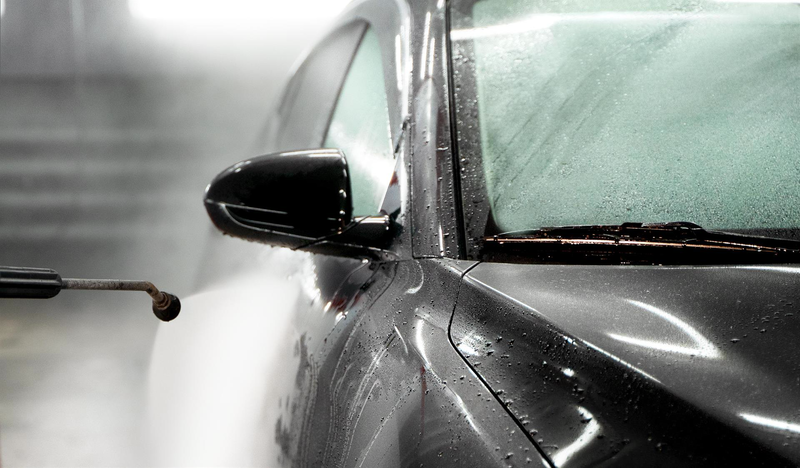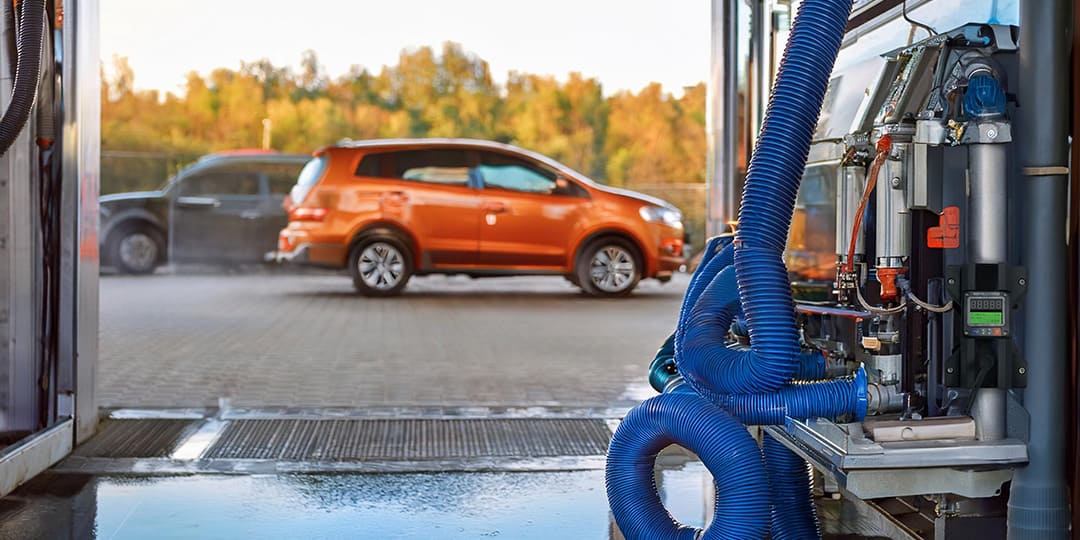Soft-cloth vs Touchless Car Wash

Automatic car wash machines, including Soft-cloth Car Wash and Touchless Car Wash systems, have revolutionized the way vehicles are cleaned. These systems vary in their operational mechanisms and offer different pros and cons.
Soft-cloth Car Wash: Also known as tunnel or conveyor car wash, uses rotating brushes or cloth materials to gently scrub the surface of the vehicle, ensuring a thorough clean. It typically involves a conveyor system that moves the vehicle through various cleaning stages. The advantages of this system include effective cleaning and suitability for high-volume operations. However, it has limitations such as the potential for surface scratches and limited customization for different vehicle shapes.
Touchless Car Wash: Also known as in-bay or rollover car wash. It is a brushless or no-contact system, that relies solely on high-pressure water jets and cleaning solutions to wash the vehicle, minimizing the risk of surface scratches. Ideal for vehicles with delicate finishes, this system offers a quick and efficient cleaning process. The disadvantage is that it may not remove stubborn or heavily soiled contaminants as effectively as systems with brushes.
The Soft-cloth Car Wash provides a more thorough cleaning, suitable for removing tough dirt and grime, while the Touchless Car Wash is better for vehicles requiring gentle care to avoid scratches. When choosing an automatic car wash system, it’s important to consider the specific needs of your vehicle and the level of cleaning required. Regular maintenance of these systems is crucial to ensure their longevity and effectiveness
[1]
3 Common Mistakes To Avoid While Washing Your Car
While automatic car wash is a trend, people also like to wash their cars at home or self-service car washes. When you wash your car, here are some mistakes to avoid:
1. Immediately rinse your car with water after turning off the engine
It could potentially lead to car disc brake warping. It's generally recommended to let the car cool down for about ten minutes before starting the washing process.
2. Using only water and dish soap for car washing
It is ineffective in removing tar and iron filings from the car's body. Additionally, dish soap often contains sodium chloride, which can damage the car paint and cause trim aging. It is advisable to purchase specialized car wash detergents.
3. Unfamiliarity with operating a pressure washer
Self-service car wash sometimes puts people at risk and exposes the car to the danger of paint deterioration. Please hold high-pressure washers tightly before turning on the water and make sure there are no children around you. Injuries caused by the water jet hitting your body are no joke.
[2]
Applications of Nozzles in the Car Wash Industry
In the car wash industry, automatic car wash machines utilize water and cleaning solvents sprayed onto the vehicle body. During the initial wash stage, high-pressure wide-angle nozzles distribute water evenly over the vehicle's surface. For the foam application stage, nozzles resistant to chemicals are used for deep cleaning. The tough dirt removal stage employs flat fan nozzles that spray high-pressure water streams. Finally, low-pressure water flow nozzles are used for rinsing the vehicle's surface, facilitating subsequent drying operations.

Case: A prominent Taiwanese car wash machine manufacturer
It is one of the top three exporters in Taiwan with over 20 years of history, specializes in car wash machine design, manufacturing, and water treatment systems. Their business spans across Asia and South America. Some of their equipment uses imported nozzles, but when replacement becomes cost-prohibitive, the company turns to LORRIC for alternative nozzle solutions.
Solution: LORRIC's H Series single-piece stainless steel fan nozzles.
After testing the performance in a flow laboratory, it was found that two types of nozzles are primarily used in their machines. One type is for cleaning, requiring stainless steel nozzles to withstand high-pressure water flow. The other type is used in the vehicle wetting process, necessitating large-angle fan nozzles for wide coverage. LORRIC provided the H Series nozzles, one with a zero-degree angle for high-pressure washing and another with a wide 110-degree angle for large-area wetting. LORRIC's nozzles perform well under high pressure without bursting and maintain a complete fan-shaped water column, even at wide angles, enhancing cleaning effectiveness. After confirming the performance, the company replaced all their machine nozzles with LORRIC's, becoming one of their loyal clients.
Application of Liquid Flow Meters in the Car Wash Industry
In the car wash industry, liquid flow meters are typically installed at the inlet of cleaning solutions and water to monitor the flow rate and volume. This data allows the car wash machines to automatically adjust the usage of cleaning solutions and water based on different washing programs, ensuring an optimal balance between cleaning effectiveness and speed. Additionally, these flow meters also serve to control and monitor the performance of the car wash machines. For example, if an abnormal flow of cleaning solution or water is detected, the machine will automatically shut down to prevent damage or affect the washing outcome.

Case : A Taiwanese Car Wash Machine Manufacturer
Traditional car wash machines focused on cleaning power without controlling water usage, leading to high costs and environmental impact. Recently, companies are paying more attention to ESG (Environmental, Social, and Governance) sustainability, aiming to use water effectively while saving costs. The company wanted to install a flow meter to monitor water usage, reduce unnecessary consumption, thereby lowering costs and achieving sustainability goals.
Solution: LORRIC's FU-TX310 Clamp-On Ultrasonic Flow Meter
To install a flow meter without dismantling equipment, it's recommended to use LORRIC's FU-TX310 Clamp-On Ultrasonic Flow Meter (now updated to the latest FU-ES Ultrasonic Flow Meter). This meter features easy installation without cutting pipes or machine downtime. It can detect flow from outside the pipe, causing no pipe damage and ensuring no contamination to the liquid. LORRIC's patented ultrasonic flow meter with metal clasp design makes installation easier for field personnel. This design not only assists effectively but also allows a single person to complete the installation, significantly reducing the difficulty of the entire process.